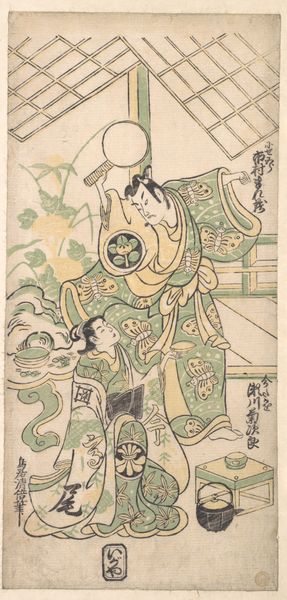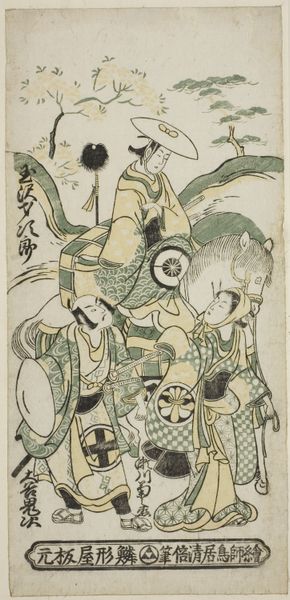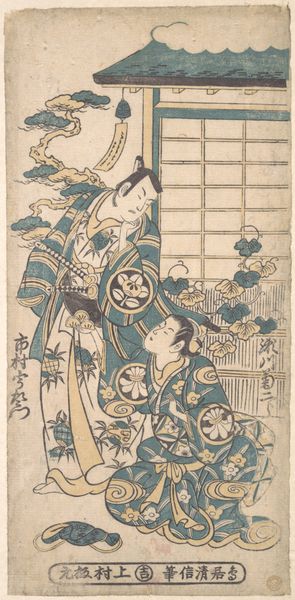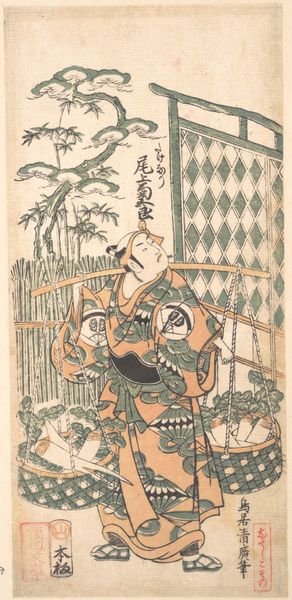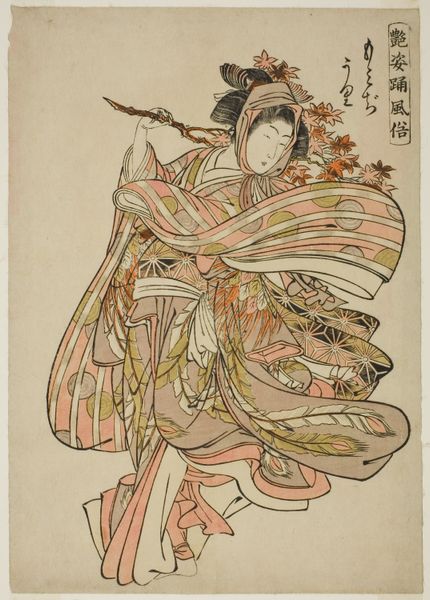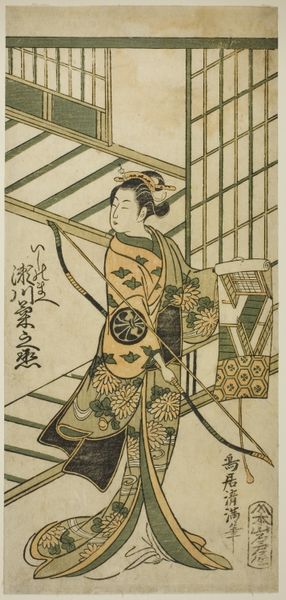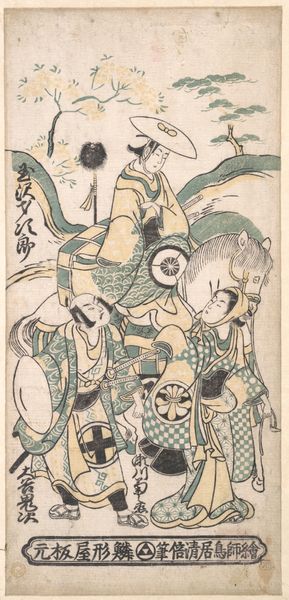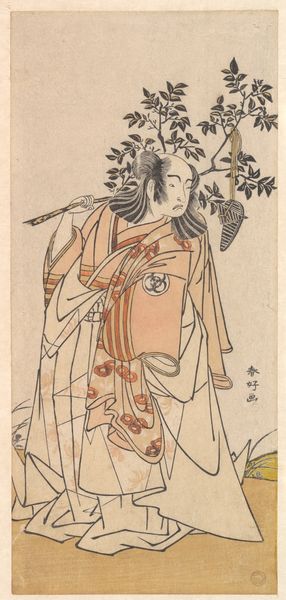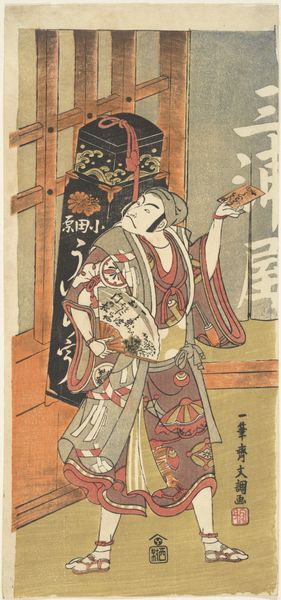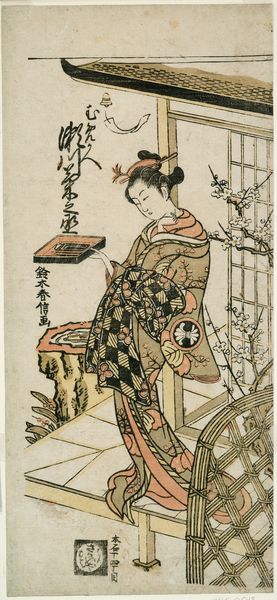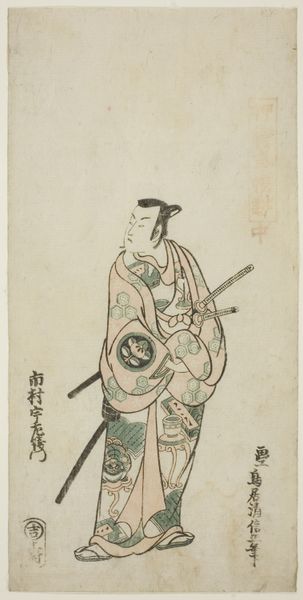
The Actor Sanogawa Ichimatsu I as Ike no Shoji in the play "Mangetsu Oguri Yakata," performed at the Ichimura Theater in the eighth Month, 1747 1747
0:00
0:00
print, paper, woodblock-print, woodcut
#
portrait
#
narrative-art
# print
#
asian-art
#
ukiyo-e
#
figuration
#
paper
#
woodblock-print
#
woodcut
Dimensions: 11 5/8 × 5 3/4 in.
Copyright: Public Domain
Editor: This woodblock print, "The Actor Sanogawa Ichimatsu I as Ike no Shoji…," was created by Torii Kiyonobu II in 1747. The pose feels really dramatic; the actor looks like he’s in the middle of a big fight scene. What stands out to you when you look at this print? Curator: I immediately notice the power dynamics being represented. Ukiyo-e prints, like this one, often depicted popular Kabuki actors. These actors weren’t just performers, they were cultural icons, influencing fashion, behavior, and even social discourse. To understand the full picture, what role does class play in interpreting the image? Editor: Class? Well, Kabuki was popular with the merchant class, right? And the actors became celebrities… Curator: Exactly. While the aristocracy looked down on Kabuki, the merchant class embraced it. These prints, then, become a way for a burgeoning class to represent themselves and their values, through the idealized figures of the actors. In the image, the actor is adorned with elaborate attire. But can we be sure if that depiction aligns with reality? Editor: So, the artist is making a statement, not just recording a likeness. I wonder if they are accurately capturing the nuances of class or even gender. Curator: Absolutely. Think about the social restrictions placed on actors. How did that affect their identities? The image, on one hand, becomes an act of cultural participation. And, on the other, an invitation to see it through performance. This performance challenges conventional understandings of identity. Editor: That is thought-provoking, how it’s connected to performance, social identity, and cultural shifts. This print feels like more than just a portrait; it's a lens into a moment of social change. Curator: Precisely! It's about recognizing how art, even something that seems straightforward, reflects the tensions and negotiations of its time, offering critical perspectives on established social and cultural norms.
Comments
No comments
Be the first to comment and join the conversation on the ultimate creative platform.

